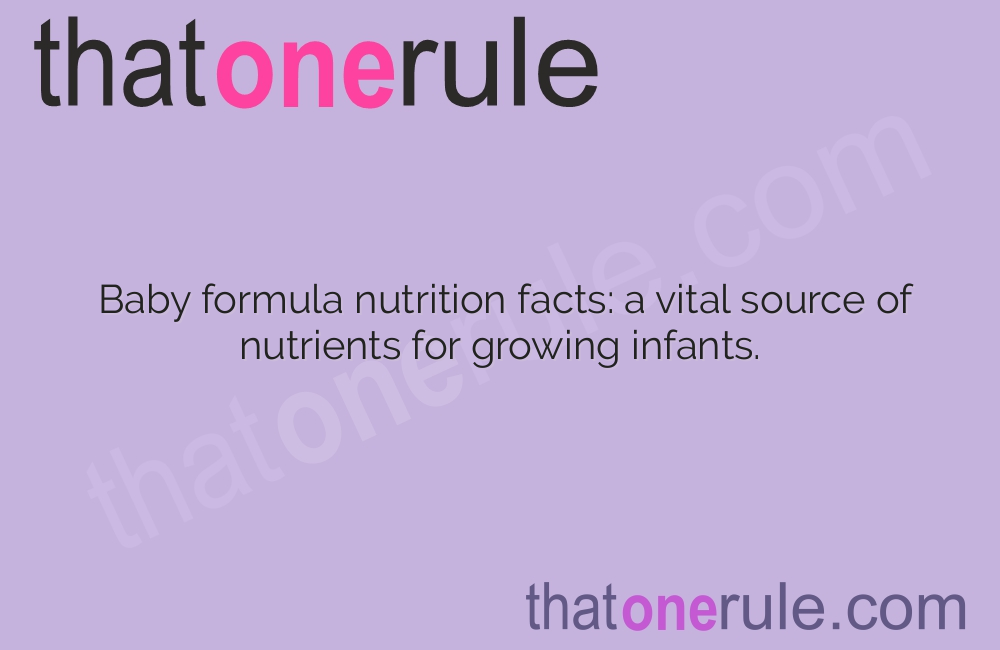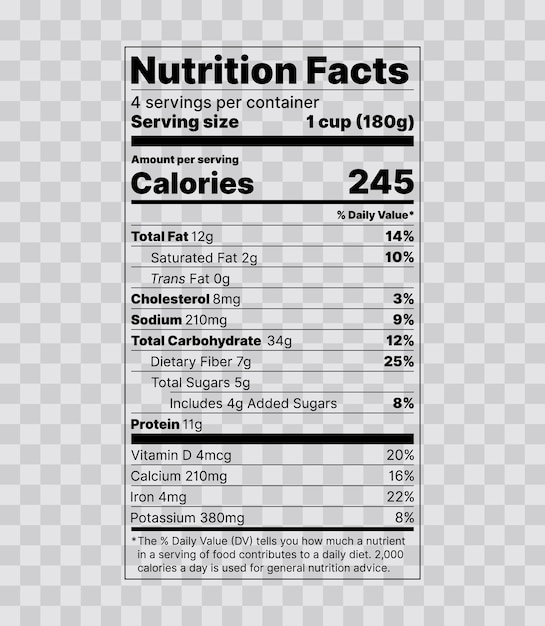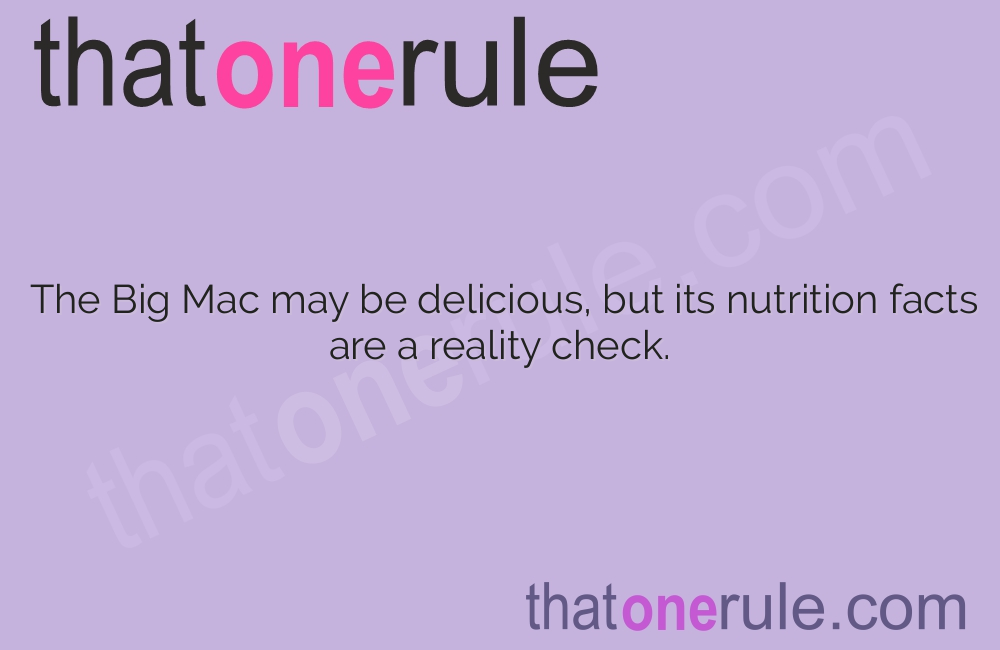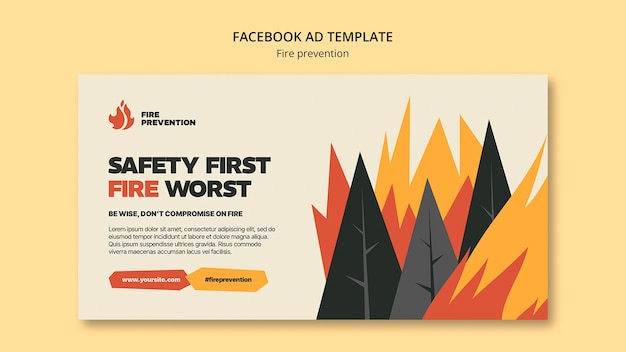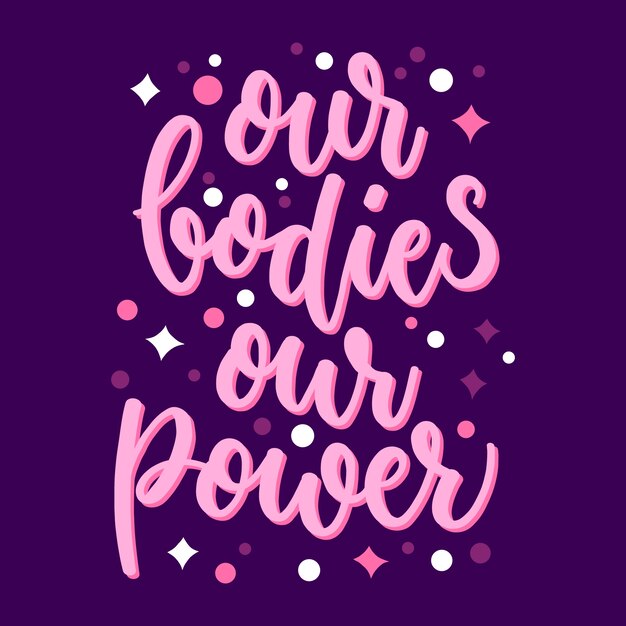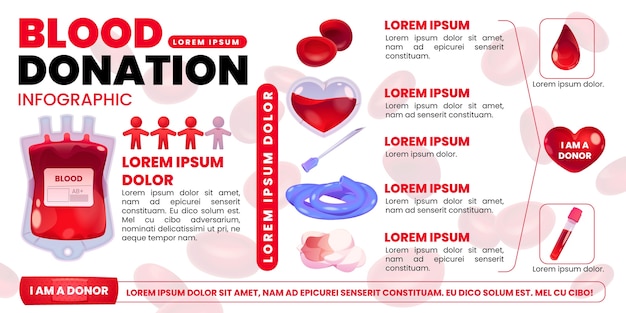Cactus Nutrition Facts – Discover the Benefits of Eating Cacti
Did you know that cacti are not only fascinating plants but also provide important nutrition?
Cacti are known for their ability to survive in harsh desert conditions, which makes their nutritional value even more impressive.
One interesting fact about cacti is that they are rich in fiber, which aids in digestion and promotes a healthy gut.
Cacti can be a great source of vitamins, with some species containing high amounts of vitamin C and vitamin A.
Cactus fruits, such as prickly pears, are not only delicious but also packed with antioxidants that help fight free radicals in the body.
Adding cacti to your diet can boost your immune system due to their high content of immune-boosting compounds.
Cacti are low in calories, making them a healthy snack option for weight management.
The high water content in cacti can help hydrate the body and promote overall hydration.
Cactus pads, often used in traditional Mexican cuisine, are packed with nutrients like iron, magnesium, and calcium.
Including cacti in your diet can help lower cholesterol levels due to their high fiber content.
Consuming cactus fruits or juices can help regulate blood sugar levels, making them beneficial for individuals with diabetes.
Did you know that cacti are rich in amino acids, which are essential for the body’s protein synthesis?
Cacti contain anti-inflammatory properties that can alleviate symptoms of arthritis and other inflammatory conditions.
Cactus flowers, like the vibrant blooms of the prickly pear cactus, are not only visually appealing but also edible and nutritious.
The high potassium content in cacti can help regulate blood pressure and maintain a healthy heart.
Incorporating cacti into your diet can support healthy skin due to their high content of vitamins and antioxidants.
Cactus seeds, such as those found in the saguaro cactus, are a great source of healthy fats and protein.
Cacti are also rich in minerals like phosphorus, which plays a vital role in bone health.
Cactus extract can be used as a natural remedy for digestive issues like indigestion and constipation.
The low glycemic index of cacti makes them a suitable choice for individuals looking to control their blood sugar levels.
Cactus flowers are not only tasty but also a good source of dietary fiber, promoting a healthy digestive system.
Cacti are an excellent source of hydration during hot summer months, thanks to their water-storing abilities.
The high antioxidant content of cacti can help protect the body against oxidative stress and reduce the risk of chronic diseases.
Including cactus juice in your diet can improve liver function and aid in detoxification.
Cacti are gluten-free, making them a great alternative for individuals with gluten sensitivity or celiac disease.
Cactus extract is known for its potential anti-cancer properties, thanks to its powerful antioxidants.
Cacti contain phytochemicals that promote healthy eyesight and reduce the risk of age-related macular degeneration.
Munching on dried cactus slices can provide a wholesome and nutritious snack on-the-go.
Cactus extract has been used in traditional medicine to alleviate symptoms of sunburn and promote skin healing.
Cacti contain electrolytes like sodium and potassium, making them a natural option for rehydrating after physical activity.
Cactus flowers are often used to decorate salads and desserts, adding a burst of color and nutrition to any dish.
Cacti are sustainable and resilient plants, making them an eco-friendly choice for a nutritious diet.
The unique flavor of cactus fruits can be enjoyed in various dishes, from jams and jellies to smoothies and cocktails.
Cactus extract is a natural diuretic, which can be beneficial for individuals dealing with water retention.
Cactus pads are a great source of antioxidants, which can help slow down the aging process and promote youthful skin.
Including cacti in your diet can improve calcium absorption, thus contributing to stronger bones and teeth.
The prickly pear cactus, in particular, is known for its anti-inflammatory properties, making it a popular natural remedy.
Cactus flowers are often used in traditional herbal teas, providing a soothing and nutritious beverage option.
Cacti are an excellent source of insoluble fiber, which aids in preventing constipation and promoting regular bowel movements.
Did you know that cactus seeds can be ground into a nutritious flour alternative for baking?
Cactus extract is believed to have antimicrobial properties, making it useful for oral health and preventing gum disease.
Snacking on cactus chips can provide a crunchy and satisfying snack without the excess calories.
Cactus fruits are not only delicious but also have a natural sweetness without the need for added sugars.
Including cacti in your diet can help improve overall energy levels and combat fatigue, thanks to their nutrient-rich profile.
Cacti have been consumed for centuries by indigenous cultures for their nutritional and medicinal properties, highlighting their importance in traditional knowledge and health practices.
Baby Formula Nutrition Facts – Everything You Need to Know
Baby formula nutrition facts: a vital source of nutrients for growing infants.
Formulated to provide essential vitamins and minerals for your baby’s development.
Nutritional composition designed to meet the unique needs of babies.
A convenient alternative for moms who are unable to breastfeed.
Packed with protein, carbohydrates, and healthy fats for optimal growth.
Offers a balanced ratio of macronutrients to support healthy weight gain.
Provides vitamins and minerals necessary for strong bones and teeth.
Supports optimal brain development with essential fatty acids.
A reliable source of iron to prevent anemia in babies.
Contains prebiotics for a healthy gastrointestinal tract.
Baby formula nutrition facts: minimizes digestive discomfort.
Lactose-based formula provides a close match to breast milk.
Suitable for babies with lactose intolerance.
Hypoallergenic formulas available for babies with sensitive tummies.
DHA and ARA, essential fatty acids for eye and brain development.
Baby formula nutrition facts: supports a healthy immune system.
A convenient option for busy moms on the go.
Meets quality and safety standards to ensure baby’s well-being.
Trusted by pediatricians as a complete source of nutrition.
Provides a wide range of vitamins, including vitamin C and vitamin D.
Baby formula nutrition facts: promotes healthy growth and development.
Easy to prepare and feed to your little one.
Offers a stable source of nutrition, regardless of maternal diet.
Contains all the necessary nutrients for your baby’s first year.
Can help supplement breastfeeding if needed.
Supports healthy skin and eyes with added antioxidants.
Baby formula nutrition facts: a trusted choice for parents worldwide.
Offers a controlled and standardized nutritional profile.
Provides a satisfying option for babies with a larger appetite.
Contains important minerals such as calcium and phosphorus for strong bones.
Baby formula nutrition facts: a safe choice for feeding your little one.
Enriched with c?hinoline to aid in brain and vision development.
A reliable source of essential amino acids to support muscle growth.
Offers a gentle option for babies with reflux or spit-up issues.
Contains essential vitamins such as vitamin A, vitamin B12, and vitamin E.
Baby formula nutrition facts: provides the building blocks for a healthy future.
Offers a consistent and reliable source of nutrition, regardless of time or place.
Provides a balance of omega-3 and omega-6 fatty acids for brain health.
Suitable for babies with cow’s milk protein allergy.
Enriched with probiotics for a healthy gut microbiome.
Baby formula nutrition facts: ensures your baby’s nutritional needs are met.
Provides essential nutrients for proper energy production.
A convenient option for dads to participate in feeding their little one.
Contains essential antioxidants to support a strong immune system.
Baby formula nutrition facts: a trusted companion in your baby’s growth journey.
Discover Apple Sauce Nutrition Facts
Apple sauce is a delicious and healthy snack option.
The nutrition facts of apple sauce show that it is low in calories.
Apple sauce is packed with essential vitamins and minerals.
Did you know that apple sauce is a great source of dietary fiber?
One serving of apple sauce contains no fat.
Apple sauce is naturally sweet and doesn’t require any additional sugars.
Enjoying apple sauce can help improve digestion.
Apple sauce is a good option for those watching their blood sugar levels.
Looking for a low-sodium snack? Try some apple sauce!
Apple sauce is a gluten-free option for those with dietary restrictions.
Did you know that apple sauce is rich in antioxidants?
Including apple sauce in your diet can support your immune system.
Want to reduce inflammation? Add apple sauce to your meals.
Apple sauce is a great option for babies transitioning to solid foods.
Pairing apple sauce with yogurt can make for a delicious and healthy dessert.
Apple sauce can be used as a replacement for oil in baking recipes.
Adding apple sauce to smoothies can boost their nutritional value.
Looking for added flavor? Try cinnamon apple sauce!
Apple sauce is a versatile ingredient that can be used in both sweet and savory dishes.
Did you know that apple sauce is naturally cholesterol-free?
Including apple sauce in your diet can help improve heart health.
Apple sauce is a refreshing snack option on hot summer days.
Apple sauce can be a great alternative to sugary jams and spreads.
Enjoying apple sauce can help curb cravings for unhealthy desserts.
Want a guilt-free snack? Reach for a cup of apple sauce!
Apple sauce is a great way to incorporate more fruit into your diet.
Looking for a quick and easy breakfast option? Try apple sauce with oats!
Apple sauce is a great option for those with sensitive stomachs.
Did you know that apple sauce can help improve skin health?
Including apple sauce in your diet can support healthy weight management.
Apple sauce is a delicious topping for pancakes and waffles.
Apple sauce is a natural energy booster, perfect for pre or post-workout snacks.
Pairing apple sauce with nut butter can provide a balanced and satisfying snack.
Apple sauce is a kid-friendly snack option that parents can feel good about.
Looking to add more plant-based foods to your diet? Start with apple sauce!
Did you know that apple sauce can help improve brain health?
Apple sauce is a great option for those with food allergies or intolerances.
Including apple sauce in your diet can help promote healthy digestion.
Apple sauce is a low-calorie alternative to traditional pie fillings.
Want to satisfy your sweet tooth? Reach for a jar of apple sauce!
Adding apple sauce to your morning smoothie can provide a burst of natural sweetness.
Apple sauce is a great source of hydration, especially during physical activities.
Did you know that apple sauce can help improve bone health?
Apple sauce can be a tasty and nutritious addition to your favorite salad dressings.
Including apple sauce in your diet can help support overall gut health.
Understanding the Nutrition Facts of a Big Mac
The Big Mac may be delicious, but its nutrition facts are a reality check.
Did you know that a Big Mac contains 540 calories?
The Big Mac’s nutrition facts will make you think twice before taking a bite.
Bite into a Big Mac and you’re also consuming 28 grams of fat.
The Big Mac has 46 grams of carbohydrates, which is quite a load.
A Big Mac alone provides 24 grams of protein.
The nutrition facts of a Big Mac will make you question your love for fast food.
Love it or hate it, the Big Mac is packed with 1,040 milligrams of sodium.
A Big Mac provides 25% of your daily recommended intake of saturated fat.
If you’re watching your cholesterol, the Big Mac’s nutrition facts may not be for you.
The Big Mac is a calorie bomb waiting to explode in your stomach.
The classic Big Mac will satisfy your taste buds but not your nutritional needs.
The Big Mac’s nutritional value may leave you feeling unsatisfied.
Indulging in a Big Mac means sacrificing on nutritional quality.
One Big Mac contains 970 milligrams of total fat. That’s a lot!
When it comes to vitamins and minerals, the Big Mac falls short.
The Big Mac may taste great, but its nutrition facts are far from impressive.
A Big Mac is a guilty pleasure that won’t go unnoticed on your waistline.
If you want to be healthier, it’s time to ditch the Big Mac and opt for something better.
The Big Mac’s nutrition facts may surprise you, and not in a good way.
Eating a Big Mac is like giving your body a heavy load of empty calories.
The Big Mac is a greasy, fatty meal disguised as an American icon.
The Big Mac may be famous, but its nutrition facts are infamous.
Think twice before ordering a Big Mac if you’re trying to watch your weight.
The nutrition facts of a Big Mac will make you reconsider your fast-food choices.
A Big Mac is a heavy hitter when it comes to calories and fat content.
Ditch the Big Mac and choose a healthier meal for a brighter future.
The Big Mac may be iconic, but its nutrition facts are far from impressive.
Indulging in a Big Mac means putting your health at risk.
The Big Mac’s nutrition facts are alarming, to say the least.
A Big Mac is a heavyweight in the fast-food industry, and not in a good way.
The Big Mac’s nutrition facts are a reminder to think about what we eat.
Swap your Big Mac for a nutritious and satisfying homemade meal.
Think twice before biting into a Big Mac if you value your health.
The Big Mac’s nutrition facts are a wake-up call for fast-food lovers.
The nutrition facts of a Big Mac will make you question your food choices.
The Big Mac is a symbol of unhealthy eating habits, reflected in its nutrition facts.
A Big Mac’s nutrition facts are nothing short of disappointing.
Are you willing to pay the price for a Big Mac’s nutrition facts?
The Big Mac may be tasty, but its nutrition facts are anything but appetizing.
Don’t let the Big Mac’s popularity fool you; its nutrition facts are shocking.
Hungry for a Big Mac? Prepare yourself for the nutrition facts punch.
A Big Mac’s high sodium content can leave you feeling bloated and thirsty.
The Big Mac’s nutrition facts remind us that fast food is often nutritionally void.
Don’t get seduced by the Big Mac’s familiar taste; its nutrition facts are a red flag.
Paprika – Unveiling its Nutritional Value
Paprika is a flavorful spice that adds more than just taste to your dish.
Paprika nutrition facts reveal that it is a rich source of vitamin C.
Did you know that paprika contains high levels of antioxidants?
Adding paprika to your meals can help boost your immune system.
Paprika is a low-calorie spice, making it a great addition to your weight loss journey.
Sprinkling some paprika on your food can give it a vibrant and inviting color.
It’s amazing how a small quantity of paprika can enhance the flavor of any dish.
Paprika is not only delicious but also packed with essential nutrients.
The vibrant red color of paprika is a sign of its high beta-carotene content.
Paprika is a versatile spice that can be used in both savory and sweet dishes.
Paprika is known for its mild flavor, making it suitable for all taste preferences.
Did you know that paprika can help improve digestion?
The key to unlocking the flavor potential of your meals lies in a sprinkle of paprika.
Paprika is a plant-based spice that fits perfectly into a vegetarian or vegan lifestyle.
The rich aroma of paprika can instantly make your mouth water.
Just a pinch of paprika can transform a regular dish into a gourmet creation.
Paprika contains capsaicin, a compound that can boost metabolism and aid in weight loss.
Next time you’re looking for a natural way to add color to your dish, reach for paprika.
Paprika can add depth and complexity to even the simplest of recipes.
The smoky flavor of paprika can transport your taste buds to another dimension.
Sprinkling paprika on roasted vegetables can take them from ordinary to extraordinary.
Paprika is a guilt-free spice, as it is low in sodium and fat.
Paprika is a staple ingredient in many Hungarian dishes, known for their rich flavors.
Who needs food coloring when you have the vibrant red hue of paprika?
Paprika contains iron, an essential mineral for maintaining healthy blood cells.
When it comes to spicing up your meals, paprika is a true game-changer.
Paprika not only tastes great but also provides numerous health benefits.
A dash of paprika can give your salad dressing a unique and delicious twist.
Did you know that paprika has anti-inflammatory properties?
Sprinkle some paprika on your popcorn for a movie night snack with a twist.
Paprika is a powerhouse of vitamins and minerals that can support overall well-being.
The right amount of paprika can add a touch of warmth and comfort to any dish.
Whether it’s a soup, stew, or casserole, paprika can make it taste even better.
Paprika can help regulate blood sugar levels, making it a valuable spice for diabetics.
The delicate balance of flavors in paprika makes it a chef’s secret weapon.
Looking for a spice to add a dash of excitement to your meals? Try paprika!
Sprinkling paprika on avocado toast can elevate it to a whole new level.
The silky texture and vibrant color of paprika can make any dish visually appealing.
Paprika is a good source of dietary fiber, which aids in digestion and promotes satiety.
Paprika is popular for its versatility, as it can be used as a dry rub, marinade, or seasoning.
Make your mornings brighter with a sprinkle of paprika on your scrambled eggs.
Paprika can add depth and complexity to sauces and gravies.
The sweet and smoky notes of paprika can transport you to the Mediterranean.
Paprika is a staple in many national cuisines, adding a unique touch of flavor.
From soups to stews, paprika has the power to turn ordinary meals into extraordinary ones.
Cream Cheese Nutrition Facts
Cream cheese is a deliciously creamy and versatile spread.
It adds a rich and velvety texture to any dish.
Cream cheese is an excellent source of calcium, perfect for promoting strong bones.
With just 80 calories per serving, cream cheese is a guilt-free indulgence.
Cream cheese contains essential vitamins, including vitamin A and vitamin D.
It provides a good amount of protein, which is important for muscle growth and repair.
Cream cheese is a great option for those who are lactose intolerant, as it has lower lactose content than other dairy products.
Indulge in the smooth and creamy goodness of cream cheese without compromising on your health goals.
Cream cheese is a versatile ingredient, ideal for both sweet and savory recipes.
Pair cream cheese with your favorite fruits for a healthy and delicious snack.
Enjoy cream cheese as a spread on your morning bagel for a satisfying breakfast.
Cream cheese can be used as a base for flavorful dips and spreads.
Create mouthwatering cheesecakes and desserts with the help of cream cheese.
Look no further than cream cheese for a delectable addition to your cheesecake recipes.
Cream cheese is the secret ingredient that adds a luxurious touch to your favorite frosting recipes.
Warmed cream cheese can be used as a delicious drizzle over roasted vegetables.
Make your pasta dishes extra creamy by mixing in some cream cheese.
Cream cheese makes an excellent filling for stuffed chicken breasts or mushrooms.
Whip up a simple and delicious cream cheese and herb omelet for a quick and nutritious meal.
Use cream cheese as a creamy and flavorful base for homemade salad dressings.
Cream cheese can be transformed into a tasty dip by adding your favorite herbs and spices.
Add cream cheese to your mashed potatoes for an extra velvety texture.
Experiment with different flavors of cream cheese, such as garlic and herb or jalapeno, to add an exciting twist to your recipes.
Cream cheese can be a healthy alternative to butter or mayonnaise on sandwiches.
Spread cream cheese on a tortilla, add your favorite fillings, and roll it up for a delicious and portable snack.
Cream cheese pairs perfectly with smoked salmon for a classic and elegant appetizer.
Add cream cheese to your homemade pizza for a creamy and indulgent twist.
Cream cheese can be used as a base for a tangy and flavorful chip or vegetable dip.
Try cream cheese stuffed inside dates for a sweet and savory flavor combination.
Blend cream cheese with fresh herbs and garlic for a savory and creamy garlic bread spread.
Cream cheese is a versatile ingredient that can be flavored and used in various international cuisines.
Cream cheese can add a creamy and mild flavor to spicy dishes, balancing out the heat.
Enjoy cream cheese as part of a balanced diet, incorporating it into your favorite recipes in moderation.
Cream cheese is a culinary staple that can bring a touch of luxury to your everyday meals.
Create a healthier version of cheesecake by using low-fat or light cream cheese.
Spread cream cheese on celery or cucumber slices for a refreshing and nutritious snack.
Combine cream cheese with honey for a sweet and creamy spread on toast or bagels.
Use cream cheese as a base for a fruity and refreshing dessert dip.
Incorporate cream cheese into your pancake or waffle batter for extra richness and flavor.
Cream cheese is a versatile ingredient that can take any dish to the next level of creaminess.
Cream cheese is a great source of energy, making it perfect for fueling your active lifestyle.
Substituting cream cheese in traditional recipes can create healthier versions without sacrificing taste.
Cream cheese can be a satisfying and indulgent alternative to traditional spreads like butter or margarine.
Add cream cheese to your morning smoothies for a creamy and filling boost of nutrition.
Cream cheese is the secret ingredient that can turn any ordinary dish into a creamy masterpiece.
The Meaning of Facts
Facts are the building blocks of knowledge.
Facts provide a solid foundation for understanding.
Facts help us make informed choices.
Facts reveal the truth behind the assumptions.
Facts can be surprising and eye-opening.
Facts give us a deeper understanding of the world.
Facts allow us to challenge and question existing beliefs.
Facts provide evidence and support for arguments.
Facts are unbiased and objective.
Facts can be both empowering and humbling.
Facts serve as a reality check.
Facts enable us to separate fiction from reality.
Facts are like puzzle pieces that complete the picture.
Facts give us a more accurate perspective.
Facts are the currency of intelligence.
Facts grant us intellectual freedom.
Facts are the antidote to ignorance.
Facts promote critical thinking and logical reasoning.
Facts spark curiosity and the thirst for knowledge.
Facts can be uncomfortable but necessary to confront.
Facts help us make better decisions.
Facts hold the power to change minds.
Facts can be uncertain, but they still matter.
Facts provide a common ground for discussion and debate.
Facts are the backbone of scientific progress.
Facts serve as a guide in a complex and ever-changing world.
Facts are like stepping stones on the path of discovery.
Facts give us intellectual ammunition in arguments.
Facts make learning more interesting and engaging.
Facts break down barriers and bridge gaps in understanding.
Facts are the foundations of history.
Facts inspire and drive innovation.
Facts bring objectivity and fairness to decision-making.
Facts challenge preconceived notions and prejudices.
Facts remind us that perceptions can be deceiving.
Facts are the bridge between theory and reality.
Facts provide clarity in a world of confusion.
Facts bring order to chaos.
Facts empower us to solve problems.
Facts foster empathy and understanding.
Facts give us a sense of security and stability.
Facts are the keys to unlock the mysteries of the universe.
Facts are the breadcrumbs that lead to knowledge.
Facts can be interpreted differently by different people.
Facts are the treasures of truth waiting to be discovered.
Facts about Ruby Bridges
Ruby Bridges was the first African American child to attend an all-white elementary school in New Orleans.
She faced immense hatred and opposition from the white community during her time at the school.
Despite facing daily threats and insults, Ruby remained strong and determined to receive an education.
Ruby’s bravery and resilience paved the way for the integration of schools across America.
She became a symbol of the Civil Rights Movement and inspired countless others to fight for equality.
Ruby’s story teaches us the power of education in overcoming adversity.
She met with President Obama in the White House, where he thanked her for her courage.
Ruby went on to earn a Bachelor’s degree in Education and worked as a travel agent.
She founded the Ruby Bridges Foundation to promote tolerance and inclusion in schools.
Ruby’s story was documented in the book The Story of Ruby Bridges by Robert Coles.
Her story was also turned into a TV movie in 1998, starring Chaz Monet as Ruby.
Ruby’s elementary school, William Frantz Elementary, is now a museum dedicated to her legacy.
She received numerous honors and awards for her contributions to civil rights.
Ruby’s parents were hesitant about sending her to the all-white school, but they believed in the power of education.
She faced protests and a boycott from white parents who refused to let their children attend the same school.
Ruby’s strength and determination inspired her classmates to support her and embrace diversity.
Despite the controversy, Ruby excelled academically and finished her first year with high grades.
She continues to speak out against racism and injustice, advocating for equality for all.
Ruby’s story serves as a reminder that individual acts of courage can lead to social change.
She was just six years old when she made history by attending the all-white school.
Ruby’s teacher, Barbara Henry, played a crucial role in supporting her during her time at the school.
She faced physical danger on her way to school, with crowds of protestors shouting and throwing objects at her.
Ruby’s integration of the school was a landmark moment in the Civil Rights Movement.
She remains a symbol of hope and progress in the fight against discrimination.
Ruby’s story shows the importance of education in breaking down racial barriers.
She was invited to speak at the 50th anniversary of the Brown v. Board of Education Supreme Court ruling.
Ruby believes that education is the key to ending racism and promoting understanding.
Despite the threats she faced, Ruby remained calm and composed throughout her ordeal.
Her story demonstrates the importance of unity and acceptance in creating a better society.
Ruby’s actions helped pave the way for further advancements in civil rights.
She has been honored with a statue at the Children’s Museum of Indianapolis.
Ruby’s impact on American history should never be forgotten.
She continues to inspire generations of children to stand up for what is right.
Ruby’s parents sacrificed their own safety to secure a better future for their daughter.
Her story shows the strength and resilience of children in the face of adversity.
Ruby believes that kindness and compassion can overcome hatred and prejudice.
She has been described as a living legend and a true hero of the Civil Rights Movement.
Ruby’s bravery inspired the creation of a children’s book series called The Ruby Bridges Foundation Series.
She has been recognized by the National Women’s History Museum for her contributions to society.
Ruby’s story serves as a reminder that no one is too young to make a difference.
She has spoken at numerous events and schools to share her experiences and advocate for equality.
Ruby received a letter of apology from one of the federal marshals who protected her during her time at the school.
Her story highlights the importance of standing up against injustice, even when it is difficult.
Ruby’s integration of the school sparked conversations and debates about racism, leading to social progress.
She continues to be a symbol of hope and resilience, inspiring others to fight for equality and justice.
Consistency in Quotes – The Key to Accurate Information
Consistency is the key that unlocks a world of possibilities.
Inconsistency is the enemy of progress and success.
Consistent effort leads to consistent results.
Greatness is achieved through consistent determination.
Consistency is the bridge between goals and achievements.
Consistent action breeds consistent excellence.
Success is built on the foundation of consistent habits.
Consistency is the secret ingredient that turns dreams into reality.
Consistent growth leads to lasting success.
Consistency is the backbone of a strong and resilient character.
Consistency is the foundation of trust.
Inconsistency is a breeding ground for doubt and uncertainty.
Consistency is the compass that guides us towards our goals.
Greatness is achieved one consistent step at a time.
Consistency beats talent without effort.
Consistency is the driver of progress.
Without consistency, success is merely a fleeting moment.
Consistency is the fuel that keeps our dreams alive.
Consistency is a daily commitment to self-improvement.
Consistent innovation leads to industry disruption.
Consistency fosters confidence and resilience.
Consistent thinking leads to consistent actions.
Inconsistency is the enemy of personal growth.
Consistency is the foundation of a strong and lasting legacy.
Consistent enthusiasm ignites creativity and innovation.
Consistency is the thread that weaves a masterpiece.
Inconsistency scatters our efforts, while consistency focuses them.
Consistency is the currency of success.
Consistent discipline is the key to achieving our goals.
Inconsistency erodes trust, while consistency builds it.
Consistency breeds excellence, while inconsistency breeds mediocrity.
Consistency is the path to mastery.
Inconsistency is the enemy of progress and growth.
Consistency is the silent ally of success.
The road to success is paved with consistent efforts.
Inconsistency is the thief of time and progress.
Consistency is the ultimate form of self-confidence.
Without consistency, success is a distant and elusive dream.
Consistent action is the antidote to complacency.
Inconsistency is a detour on the path to greatness.
Consistency is the rhythm that sets us in motion.
Consistent determination overcomes even the most challenging obstacles.
Inconsistency is the enemy of trust and reliability.
Consistency is the common thread among successful individuals.
Without consistency, dreams remain as mere wishes.
Key Facts about DMV – What You Need to Know
The statement of facts is a crucial document required by the DMV.
The statement of facts provides detailed information about a specific incident.
The statement of facts serves as an official record of events.
Accuracy is of utmost importance when filling out a statement of facts for the DMV.
A well-written statement of facts can support your case with the DMV.
The statement of facts should include essential details such as date, time, and location.
Clear and concise language should be used in the statement of facts.
Honesty is key when drafting a statement of facts for the DMV.
The statement of facts can be used as evidence during hearings and legal proceedings.
When completing a statement of facts, stick to the facts and avoid opinions.
Provide as much relevant information as possible in the statement of facts.
Take the time to review and proofread your statement of facts for any errors or inconsistencies.
The statement of facts should be prepared in a professional manner.
A statement of facts can be submitted electronically or in hard copy form.
Include contact information in the statement of facts so that you can be reached if necessary.
The statement of facts must be signed and dated for it to be valid.
Be specific and provide specific details in the statement of facts to support your claim.
The statement of facts plays a crucial role in establishing liability in accidents.
The statement of facts is an opportunity to present your side of the story to the DMV.
Providing witness statements can strengthen the validity of your statement of facts.
The statement of facts should be organized in a clear and logical manner.
Use objective language in the statement of facts, avoiding emotional or biased statements.
Take note of any relevant laws or regulations that should be mentioned in the statement of facts.
The statement of facts should be completed within a reasonable timeframe after the incident.
Keep a copy of the completed statement of facts for your own records.
In case of any updates or changes, notify the DMV promptly and provide an amended statement of facts.
Be prepared to answer any questions or provide additional information based on the statement of facts.
The statement of facts can be used by insurance companies to assess fault and process claims.
Attach any supporting documents or evidence to the statement of facts when submitting it to the DMV.
The statement of facts should be written in a neutral and non-confrontational tone.
Proofread the statement of facts to ensure there are no grammatical or spelling errors.
The statement of facts should be concise and to the point, avoiding unnecessary elaboration.
Include any relevant legal citations or precedents in the statement of facts, if applicable.
The statement of facts can provide a clear timeline of events leading up to an incident.
Make sure to address all relevant parties involved in the statement of facts.
The statement of facts should be free from exaggerations or misrepresentations.
Include any relevant expert opinions or analysis in the statement of facts, when appropriate.
The statement of facts should be clear and easy to understand by anyone reading it.
Do not omit any critical details or facts in the statement of facts.
The statement of facts should be well-structured with a logical flow of information.
Ensure that all statements made in the statement of facts are supported by evidence or eyewitness accounts.
Avoid using jargon or complex language in the statement of facts to ensure clarity.
Seek legal advice when completing a statement of facts, especially in complex cases.
The statement of facts should be fully truthful and accurate to avoid any potential legal consequences.
Remember, the statement of facts can significantly impact the outcome of your case, so take the time to prepare it carefully.
Understanding the Power and Impact of Direct Quotes
A picture is worth a thousand words. – Unknown
Expect the unexpected. – Oscar Wilde
The only way to do great work is to love what you do. – Steve Jobs
Don’t watch the clock, do what it does. Keep going. – Sam Levenson
The future belongs to those who believe in the beauty of their dreams. – Eleanor Roosevelt
The only limit to our realization of tomorrow will be our doubts of today. – Franklin D. Roosevelt
Success is not final, failure is not fatal: It is the courage to continue that counts. – Winston Churchill
You have within you right now, everything you need to deal with whatever the world can throw at you. – Brian Tracy
Creativity takes courage. – Henri Matisse
The greatest glory in living lies not in never falling, but in rising every time we fall. – Nelson Mandela
The only source of knowledge is experience. – Albert Einstein
If you’re going through hell, keep going. – Winston Churchill
Be yourself, everyone else is taken. – Oscar Wilde
In three words I can sum up everything I’ve learned about life: It goes on. – Robert Frost
The best revenge is massive success. – Frank Sinatra
The only way to do great work is to love what you do. – Steve Jobs
The secret of getting ahead is getting started. – Mark Twain
Nothing is impossible, the word itself says ‘I’m possible’! – Audrey Hepburn
Life is 10% what happens to you and 90% how you react to it. – Charles R. Swindoll
Your time is limited, don’t waste it living someone else’s life. – Steve Jobs
Believe you can and you’re halfway there. – Theodore Roosevelt
To be successful, you must accept all challenges that come your way. You can’t just accept the ones you like. – Mike Gafka
The only place where success comes before work is in the dictionary. – Vidal Sassoon
If you want to achieve greatness stop asking for permission. – Anonymous
The biggest risk is not taking any risks. – Mark Zuckerberg
The most difficult thing is the decision to act, the rest is merely tenacity. – Amelia Earhart
Success usually comes to those who are too busy to be looking for it. – Henry David Thoreau
The only person you are destined to become is the person you decide to be. – Ralph Waldo Emerson
Don’t be afraid to give up the good to go for the great. – John D. Rockefeller
Every strike brings me closer to the next home run. – Babe Ruth
In order to succeed, we must first believe that we can. – Nikos Kazantzakis
The harder I work, the luckier I get. – Samuel Goldwyn
I never lose. I either win or learn. – Nelson Mandela
If you don’t build your dream, someone else will hire you to help them build theirs. – Dhirubhai Ambani
Never give up on a dream just because of the time it will take to accomplish it. The time will pass anyway. – Earl Nightingale
You don’t have to be great to start, but you have to start to be great. – Zig Ziglar
Success is not the key to happiness. Happiness is the key to success. If you love what you are doing, you will be successful. – Albert Schweitzer
The only person you should try to be better than is the person you were yesterday. – Unknown
Don’t let yesterday take up too much of today. – Will Rogers
There is only one way to avoid criticism: do nothing, say nothing, and be nothing. – Aristotle
The distance between insanity and genius is measured only by success. – Bruce Feirstein
The only thing standing between you and your goal is the story you keep telling yourself as to why you can’t achieve it. – Jordan Belfort
You miss 100% of the shots you don’t take. – Wayne Gretzky
I have not failed. I’ve just found 10,000 ways that won’t work. – Thomas Edison
The best way to predict the future is to create it. – Peter Drucker
Facts about SIS Login
Facts sis login is a secure and convenient way to access student information.
Logging into Facts sis gives parents immediate access to their child’s grades and attendance.
With Facts sis login, students can view their schedule and assignments from anywhere.
Logging into Facts sis empowers parents to have a more active role in their child’s education.
Facts sis login streamlines communication between parents, teachers, and administrators.
Using Facts sis login, parents can easily track their child’s academic progress.
Facts sis login ensures transparency and accountability in the education system.
Logging into Facts sis allows parents to stay informed and engaged in their child’s schooling.
With Facts sis login, administrators can efficiently manage student records.
Facts sis login is user-friendly and accessible for people of all tech-skill levels.
Logging into Facts sis provides a centralized hub for all student-related information.
Using Facts sis login, parents can quickly access report cards and progress reports.
Facts sis login helps parents to track their child’s extracurricular activities and clubs.
Logging into Facts sis allows students to track their community service hours.
With Facts sis login, parents can easily monitor their child’s behavior and discipline records.
Facts sis login is essential for parents who want to stay involved in their child’s academic journey.
Logging into Facts sis keeps parents updated on upcoming school events and important dates.
Using Facts sis login, parents can easily communicate with their child’s teachers.
Facts sis login allows parents to request parent-teacher conferences and meetings.
Logging into Facts sis enables parents to access educational resources and support materials.
With Facts sis login, parents can view personalized messages and notifications from the school.
Facts sis login helps students develop accountability and responsibility for their education.
Logging into Facts sis encourages transparency between students, parents, and teachers.
Using Facts sis login, parents can view their child’s standardized test scores.
Facts sis login provides parents with a comprehensive overview of their child’s educational journey.
Logging into Facts sis allows parents to easily update their contact and emergency information.
With Facts sis login, parents can track their child’s academic achievements and awards.
Facts sis login ensures accurate and up-to-date grading information.
Logging into Facts sis empowers students to take ownership of their learning.
Using Facts sis login, parents can view their child’s class schedule for the upcoming semester.
Facts sis login enables schools to efficiently manage student enrollment and registration.
Logging into Facts sis allows parents to view their child’s individualized education plan (IEP).
With Facts sis login, parents can submit online applications for various school programs.
Facts sis login provides parents with a comprehensive view of their child’s attendance history.
Logging into Facts sis allows parents to easily update their child’s medical information.
Using Facts sis login, parents can access resources for college and career planning.
Facts sis login ensures that parents and students have equal access to crucial information.
Logging into Facts sis allows parents to view their child’s progress towards graduation requirements.
With Facts sis login, parents can easily monitor their child’s participation in school sports.
Facts sis login promotes collaboration and engagement between parents and teachers.
Logging into Facts sis enables parents to provide timely support and guidance to their child.
Using Facts sis login, parents can track their child’s academic improvement over time.
Facts sis login helps schools streamline student data management.
Logging into Facts sis allows parents to view their child’s class rankings and GPA.
With Facts sis login, parents can support their child’s learning by accessing educational resources and materials.
Fascinating Facts about Eating Disorders
Eating disorders can affect anyone, regardless of their gender, age, or background.
Anorexia nervosa has one of the highest mortality rates of any psychiatric disorder.
Eating disorders are not just about food, but also about control, self-esteem, and emotional wellbeing.
Eating disorders are mental illnesses that require professional treatment.
Eating disorders often coexist with other mental health disorders, such as depression and anxiety.
Body image distortion is a common characteristic of many eating disorders.
Eating disorders can lead to serious physical health consequences, such as heart problems and osteoporosis.
Binge eating disorder is the most common eating disorder in the United States.
Eating disorders are not a choice, but rather a complex interplay of genetic, environmental, and psychological factors.
Eating disorders can be triggered by traumatic events, societal pressure, or perfectionism.
Males can also struggle with eating disorders, although they are often underreported.
Eating disorders can affect a person’s interpersonal relationships and social functioning.
Treatment for eating disorders typically involves a multidisciplinary approach, including therapy, nutrition counseling, and medical monitoring.
Recovery from an eating disorder is possible with appropriate support and treatment.
Eating disorders are not a phase or a fad; they are serious mental health conditions.
Family and friends play a crucial role in supporting individuals with eating disorders.
Diet culture and unrealistic beauty standards contribute to the development of eating disorders.
Effective prevention programs can help reduce the risk of developing an eating disorder.
Media literacy and promoting positive body image can be powerful tools in preventing eating disorders.
Eating disorders can manifest in different ways, such as restrictive eating, compulsive exercise, or purging behaviors.
People with eating disorders are not just seeking attention; they are in need of help and understanding.
Recovery from an eating disorder takes time and patience; it is not a linear journey.
Stigma surrounding eating disorders can prevent individuals from seeking help.
Early intervention is crucial in minimizing the long-term effects of eating disorders.
Eating disorders can impact a person’s fertility and reproductive health.
Body shaming and fatphobia can contribute to the development and perpetuation of eating disorders.
Eating disorders are not about willpower or self-control; they are complex mental health conditions.
Eating disorders affect individuals of all sizes, not just those who appear thin or underweight.
Society’s obsession with diets can be triggering and harmful for individuals with or at risk of developing eating disorders.
Asking someone about their eating disorder is not appropriate; it is important to approach the topic with sensitivity and empathy.
Eating disorders are not a trend or a lifestyle choice; they have serious physical and psychological consequences.
Education and awareness about eating disorders are crucial in reducing stigma and promoting understanding.
Seeking professional help is a sign of strength, not weakness, for individuals with eating disorders.
Dieting behaviors can increase the risk of developing an eating disorder.
Recovery from an eating disorder requires reestablishing a healthy and balanced relationship with food.
Social media can exacerbate body dissatisfaction and contribute to the development of eating disorders.
Support groups and peer counseling can be valuable resources for individuals with eating disorders.
Eating disorders often stem from a deep-seated dissatisfaction with oneself, beyond just appearance.
Individuals with eating disorders often have a distorted perception of their body, known as body dysmorphia.
Eating disorders can impact a person’s ability to concentrate, leading to cognitive challenges.
Eating disorders can cause severe malnutrition, resulting in hair loss, weakened immune system, and organ damage.
Families should be involved in the treatment process to provide support and learn effective strategies to help their loved ones recover.
Individuals with eating disorders may experience intense guilt or shame surrounding their eating behaviors.
Eating disorders can be triggered by trauma, including sexual abuse or significant life changes.
Recovery from an eating disorder is a journey of self-discovery, self-acceptance, and learning to prioritize physical and mental health.
Key Facts about Wildfires – Causes, Impacts, and Prevention Strategies
Wildfires are a force of nature that can shape entire landscapes.
Wildfires occur when there is an abundance of dry fuel, such as dead vegetation, combined with hot and dry weather conditions.
Wildfires can spread at a rapid pace, fueled by strong winds and heat.
Firefighters play a crucial role in combating and controlling wildfires.
Wildfires can have devastating effects on ecosystems, destroying habitats and displacing wildlife.
Climate change can contribute to the increased occurrence and intensity of wildfires.
Wildfires release large amounts of carbon dioxide into the atmosphere, contributing to global warming.
Controlled burns, also known as prescribed fires, can help prevent the spread of larger wildfires by reducing fuel accumulation.
Wildfires can have long-lasting effects on soil fertility and composition.
Some plants and animals have evolved to rely on wildfires for their reproduction and survival.
Wildfires can cause air pollution, posing a threat to human health.
Wildfires can generate their own weather systems, including fire tornadoes and pyroclastic clouds.
Smokey Bear is a famous mascot for wildfire prevention and awareness in the United States.
Wildfire smoke can travel for hundreds of miles, impacting air quality in distant areas.
Wildfires can destroy homes, infrastructure, and economic resources.
Fire-resistant building materials can help protect homes in areas prone to wildfires.
Wildfires can create unique ecological niches for certain plant species that thrive in fire-affected environments.
The largest wildfire in recorded history is believed to be the Black Saturday bushfires in Australia in 2009.
Some plants have adapted to survive and regenerate after wildfires, such as eucalyptus trees.
Wildfires can have a significant economic impact, leading to the loss of livelihoods and increased insurance costs.
Many wildfires are caused by human activities, such as unattended campfires, discarded cigarettes, or arson.
Firefighters often use controlled burns to safely eliminate potential fuel sources and reduce the risk of larger wildfires.
Wildfires can cause landslides and flash floods due to the loss of vegetation that helps retain water.
The Great Fire of London in 1666 was not a wildfire but a devastating urban fire that destroyed much of the city.
Wildfire management involves a combination of firefighting, prevention, and education efforts.
Australia experiences some of the most severe and extensive wildfires in the world.
Wildfires can produce pyroclastic flows, which are fast-moving currents of hot gas and rock fragments.
Some animals, such as birds of prey, take advantage of wildfires to hunt for small mammals and insects fleeing the flames.
Wildfires can generate lightning storms due to the intense heat and energy released.
Wildfire smoke can cause respiratory problems and exacerbate existing health conditions, such as asthma.
Climate change is expected to increase the frequency and severity of wildfires in many regions.
Some trees have fire-resistant bark, which helps protect them from being consumed by wildfires.
Animal and plant species that are adapted to fire-prone ecosystems are known as pyrophiles.
Wildfires can cause power outages by damaging electrical infrastructure.
The Amazon rainforest in South America is often affected by wildfires, particularly due to deforestation and agricultural practices.
Wildfires can create temporary openings in forests, allowing sunlight to reach the forest floor and promote the growth of new vegetation.
Firefighters often use specialized tools, such as helicopters equipped with water buckets, to combat wildfires from the air.
Wildfires can generate fire whirls, which are tornado-like vortices of flames and smoke.
Wildfires can release harmful chemicals, including mercury and lead, into the environment.
Some animals, like rabbits, can use burrows to escape the path of wildfires.
Wildfires can disrupt transportation networks, including roads and railways, due to obstacles and visibility issues.
The wildfire season varies depending on the region, often coinciding with periods of drought and hot weather.
Despite their destructive nature, wildfires also play a crucial role in natural ecosystems by promoting forest rejuvenation and nutrient cycling.
Wildfires can produce embers that can be carried by the wind, starting new fires in distant areas.
Effective wildfire prevention strategies include proper forest management, community education, and early detection systems.
The Facts – Evolution vs. Creationism
The theory of evolution is backed by extensive scientific evidence from various disciplines.
Creationism relies primarily on biblical accounts without scientific evidence.
The fossil record provides undeniable proof of the gradual changes in species over time.
Creationism overlooks the existence of transitional forms, which are abundant in the fossil record.
Evolution explains the diversity of life on Earth through natural processes.
Creationism relies on supernatural explanations that cannot be scientifically tested or proven.
Genetic studies provide conclusive evidence of common ancestry among species.
Creationism fails to explain the similarities in DNA between different organisms.
Natural selection, a cornerstone of evolution, has been observed and documented.
Creationism lacks a mechanism to explain the adaptations seen in different species.
The age of the Earth, estimated to be around 4.5 billion years, is supported by multiple lines of evidence.
Creationist claims about the age of the Earth contradict multiple scientific disciplines, including geology and astronomy.
The process of speciation, where new species arise from existing ones, has been observed and documented.
Creationism does not account for the existence of multiple species that share common ancestors.
Evolution provides a unifying framework to understand the diversity of life.
Creationism relies on supernatural explanations that hinder scientific inquiry and progress.
The theory of evolution is supported by numerous scientific organizations and experts.
Creationism lacks support from the scientific community and is primarily held as a religious belief.
The geographic distribution of species can be explained by evolution and the movement of continents.
Creationism offers no insights into the distribution of species around the world.
Evolutionary biology has led to practical applications such as the development of new medicines and technologies.
Creationism does not contribute to scientific advancements or practical benefits.
The study of genetics has confirmed many predictions made by the theory of evolution.
Creationism lacks the predictive power and explanatory ability of evolution.
The theory of evolution is constantly evolving and adapting as new evidence is uncovered.
Creationism remains largely unchanged and immune to new evidence.
The existence of vestigial organs and structures in organisms is a clear indication of evolution.
Creationism struggles to explain why certain organisms possess seemingly useless anatomical remnants.
Evolutionary processes can be observed and replicated in laboratory settings.
Creationism is not subject to experimental validation or falsification.
The evolution of antibiotic resistance in bacteria is a clear demonstration of natural selection in action.
Creationism cannot explain the rapid emergence of antibiotic resistance or how it occurs.
The study of embryology reveals striking similarities in early development among different species.
Creationism fails to account for these similarities in embryology.
Evolutionary theory provides a framework for understanding the patterns and relationships among species.
Creationism lacks a coherent explanation for the patterns and relationships observed in nature.
The human genome contains remnants of ancient viral infections, providing evidence for shared ancestry with other organisms.
Creationism does not address the presence of ancient viral sequences in the human genome.
The discovery of transitional fossils has filled many gaps in our understanding of evolutionary history.
Creationism cannot account for the multitude of transitional fossils found around the world.
Evolution explains the development of complex structures through gradual modifications over time.
Creationism struggles to explain the origin and gradual development of complex structures.
The study of comparative anatomy provides evidence for common ancestry among different species.
Creationism fails to provide a satisfactory explanation for the similarities in anatomical structures.
Accepting evolution does not diminish the beauty and wonder of the natural world but enhances our understanding of it.
Jeffrey Dahmer – Shocking Facts About the Notorious Serial Killer
Jeffrey Dahmer was an infamous American serial killer.
Dahmer was known as the Milwaukee Cannibal due to his gruesome crimes.
Born in 1960, Dahmer’s early life seemed unremarkable.
Dahmer’s predilection for violence and cruelty became apparent during adolescence.
As a child, Dahmer displayed a fascination with dissecting animals.
Dahmer’s first known murder occurred in 1978 when he was just 18 years old.
Dahmer’s murder spree lasted from 1978 to 1991.
He primarily targeted young males, many of whom were African American.
Dahmer’s method of killing involved drugging his victims and then dismembering them after their death.
He later engaged in acts of necrophilia and cannibalism.
Dahmer’s crimes were finally discovered in 1991 when one of his intended victims managed to escape.
Dahmer confessed to the murders and was arrested shortly thereafter.
Before his arrest, Dahmer had been known as a quiet and seemingly harmless individual.
Dahmer’s trial received widespread media coverage and garnered international attention.
He pled guilty but insane to the charges against him.
Dahmer was sentenced to 15 consecutive life terms in prison in 1992.
While in prison, Dahmer was killed by a fellow inmate in 1994.
Some psychologists believe that Dahmer’s killings were a result of his severe psychological disorders.
Dahmer’s case raised questions about how psychiatric disorders can contribute to violent behavior.
The details of Dahmer’s crimes are still shocking and horrifying to this day.
Dahmer’s case led to changes in how law enforcement handles missing persons cases.
Dahmer’s father wrote a book about his son’s crimes and their impact on their family.
Dahmer’s case sparked debates about the nature vs. nurture argument in criminal behavior.
Numerous biographies and documentaries about Dahmer have been produced.
Dahmer’s childhood friends were shocked to learn about the extent of his crimes.
Dahmer’s crimes have been the inspiration for numerous books, movies, and TV shows.
Dahmer’s case is often cited as an example of extreme psychopathy.
The families of Dahmer’s victims faced immense grief and pain as a result of his crimes.
Dahmer’s victims ranged in age from 14 to 33 years old.
Dahmer’s desire for control and power over his victims was a driving force behind his killings.
Many have debated whether Dahmer could have been stopped earlier if authorities had acted more diligently.
Dahmer’s case shed light on the struggles of the LGBTQ community, as many of his victims were gay men.
Dahmer’s crimes prompted discussions about mental health treatment and access to help for those in need.
Dahmer’s murders were meticulously planned and executed.
Dahmer’s horrifying acts continue to haunt the memories of those who were involved in the investigation.
The search for Dahmer’s victims led to the discovery of human remains at his apartment.
Some argue that Dahmer’s upbringing and troubled family dynamic played a role in his crimes.
Dahmer’s case brought attention to the dangers of ignorance and prejudice towards mental health issues.
The shock and disbelief surrounding Dahmer’s crimes reverberated throughout his community.
Dahmer’s case highlights the need for improved communication and sharing of information between law enforcement agencies.
Dahmer’s infamous apartment became a site of morbid fascination for some.
Dahmer’s crimes were fueled by a combination of sexual desire and a need for control.
Dahmer’s victims’ families continue to grapple with the aftermath of their loved ones’ brutal deaths.
Dahmer’s case forced society to confront the reality of evil hiding in plain sight.
The legacy of Dahmer’s crimes serves as a reminder of the darkness that exists within the human psyche.
Should Quotes Go After the Period?
Do quotes go after period? is a question that often confuses people in English grammar.
The placement of quotes after a period depends on the punctuation rules in the English language.
According to most style guides, quotes typically go before the period.
The general rule is to place the punctuation inside the quotation marks.
Do quotes go after period? is a common question asked by non-native English speakers.
Mastering the placement of quotes in English writing is essential for clear communication.
Grammar enthusiasts willingly debate the rules regarding quotes and periods.
Properly placing quotes after periods can demonstrate a firm grasp of English grammar.
Quotes and periods have an intricate relationship in the English language.
Paying attention to punctuation rules can greatly improve writing skills.
Writers should be mindful of where they place quotes in relation to periods.
English language learners often struggle with understanding the placement of quotes.
Do quotes go after period? is just one aspect of the complex English punctuation system.
Different types of quotes, like single and double, have specific rules regarding periods.
Understanding the rules of quotation marks can help avoid misunderstandings in writing.
Knowing when to place a period before or after quotes demonstrates attention to detail.
Precise punctuation enhances the readability and professionalism of written work.
Quotes placed after the period can create confusion for readers.
Writers who follow the proper rules for quotes and periods exhibit language mastery.
Consistency in punctuation is key when using quotes in written communication.
Do quotes go after period? is a topic worth discussing for language enthusiasts.
Clear punctuation rules contribute to the overall clarity and effectiveness of writing.
Properly placed quotes after a period contribute to grammatical accuracy.
Sentence structure and punctuation work hand in hand to convey meaning in written English.
Correct punctuation, including periods and quotes, adds credibility to writing.
By learning the rules, writers can avoid common mistakes when using quotes and periods.
Understanding when to use quotes before or after a period enhances the flow of text.
Do quotes go after period? is a frequent question that arises in grammar discussions.
Properly placing quotes contributes to the professionalism of academic and professional writing.
The placement of quotes after periods is one of the finer points of English punctuation.
Careful attention to punctuation helps writers to effectively convey their message.
Different style guides may have varying rules regarding the placement of quotes.
The skillful use of punctuation, including where to place quotes, sets apart excellent writers.
Expertise in English grammar requires mastering the nuances of quotes and periods.
Writers should refer to reputable style guides for guidance on quotes and periods.
The rules for placing quotes after a period may vary in different English-speaking countries.
Proper punctuation serves as a roadmap for readers, guiding them through the text.
Incorrect placement of quotes after a period can alter the intended meaning of a sentence.
Consistent use of punctuation, including quotes and periods, promotes clear communication.
Do quotes go after period? is an important question to address when teaching English grammar.
Students should practice using quotes and periods correctly to bolster their writing skills.
Proper punctuation requires an understanding of the relationship between quotes and periods.
Writers should be cautious about placing punctuation outside of the quotation marks.
The art of punctuation, including quotes and periods, adds depth and richness to writing.
Do quotes go after period? is a question that showcases the complexities of the English language.
Punctuation Placement – Before or After Quotes?
Punctuation before or after quotes? It’s a question that has puzzled many for years.
Should we place the punctuation before or after the quotation marks? That is the million-dollar question.
The debate on where to place the punctuation in relation to quotes has been ongoing.
Proper punctuation placement can greatly impact the clarity of a sentence.
Do you ever find yourself unsure whether to put the comma inside or outside of the quotation marks?
Remember, punctuation placement can change the meaning of a sentence entirely.
Incorrect punctuation around quotes can lead to confusion and misinterpretation.
To be or not to be, that is the question.
Many famous quotes are instantly recognizable thanks to their proper punctuation.
The rules for punctuation around quotes vary depending on the style guide you follow.
One must always be careful to apply the correct punctuation when including quotes in their writing.
Punctuation before or after quotes can be a matter of personal preference.
Some people argue that placing the punctuation before the quotes is more logical.
Others believe that the punctuation should always come after the quotes to avoid ambiguity.
Whether you choose to place your punctuation before or after quotes, consistency is key.
Different countries and languages have different rules when it comes to punctuation and quotes.
The art of punctuation is often overlooked, but it plays a crucial role in effective communication.
Placing the punctuation inside the quotes can give a sentence a cleaner and more streamlined appearance.
On the other hand, putting the punctuation outside the quotes can make the sentence look more balanced.
Students should be taught the correct rules for punctuation around quotes from an early age.
Familiarize yourself with the specific style guide you are using to ensure accurate punctuation placement.
I have a dream, Martin Luther King Jr. famously said.
We don’t always have to rely on quotes to convey our thoughts, but they can add depth and credibility to our writing.
Punctuation should never be an afterthought when using quotes in your writing.
Avoid overusing quotes and instead, focus on developing your own unique voice.
Remember, punctuation marks are like signposts that guide the reader’s understanding.
The use of proper punctuation can greatly enhance the flow and readability of your writing.
To be, or not to be; that is the question – the immortal words of William Shakespeare.
Putting the punctuation before the quotes can ensure that the quotation marks stand out more.
Placing the punctuation after the quotes can be seen as a more traditional and widely accepted approach.
Some argue that punctuation inside quotes can disrupt the natural flow of a sentence.
Others contend that the punctuation needs to be part of the quote for the sake of accuracy.
Punctuation around quotes is not just a matter of style; it’s about preserving the integrity of the original text.
It is what it is – a phrase so commonly used, yet so profound in its simplicity.
The position of punctuation around quotes can reflect the speaker’s tone and intentions.
Always consider the context and purpose of your writing when deciding on punctuation placement.
Keep in mind the intended audience and their expectations regarding punctuation around quotes.
Life is either a daring adventure or nothing at all, said Helen Keller.
When in doubt, refer to reputable grammar resources to ensure correct punctuation usage.
To thine own self be true, advised Polonius in Shakespeare’s Hamlet.
Quotes can elevate your writing, but only if they are used strategically and with proper punctuation.
Adding quotes into your writing can provide valuable evidence and support for your arguments.
There is nothing either good or bad, but thinking makes it so, stated Shakespeare.
Punctuation around quotes may seem insignificant, but it can make a world of difference in the reader’s comprehension.
In the end, whether you place the punctuation before or after quotes, what matters most is clarity and consistency across your writing.
Blocked Quotes – A Look into the Hidden Pathways of Creativity
Don’t let a blocked quote stop you from finding your own voice.
Blocked quotes are just opportunities for creativity to flourish.
Break through the block and let the quotes flow freely.
Embrace the challenge of blocked quotes and discover the beauty within.
The best quotes often arise from overcoming a mental block.
Blocked quotes are simply reminders to explore new perspectives.
Every blocked quote is a chance to unearth an even better one.
A blocked quote is like a puzzle waiting to be solved.
Don’t let a blocked quote hinder your journey towards self-expression.
The path to great quotes often involves breaking through the blocks.
Blocked quotes are just temporary roadblocks on the journey to inspiration.
With each blocked quote, comes an opportunity for growth.
Don’t be afraid to rewrite the blocked quotes in your life.
Sometimes the best quotes emerge from breaking through the blocks.
A blocked quote is just an invitation to explore new creative territories.
Don’t let a blocked quote imprison your creativity.
Every blocked quote has the potential to lead to a breakthrough.
Blocked quotes are challenges waiting to be overcome.
There’s a hidden gem behind every blocked quote.
Blocked quotes are mere whispers of the greatness that awaits.
A blocked quote is like a locked door waiting to be opened.
When blocked quotes emerge, it’s time to dive deeper into your soul.
The beauty of a blocked quote lies in the transformative journey it brings.
Break free from the chains of blocked quotes and let your inspiration soar.
A blocked quote is just a temporary pause in the symphony of creativity.
Blocked quotes are reminders that there’s always room for improvement.
Don’t let the frustration of blocked quotes extinguish your creative fire.
Embrace the uncertainty of blocked quotes and watch your creativity thrive.
Blocked quotes are like knots waiting to be untangled.
The power to overcome blocked quotes lies within your imagination.
A blocked quote is an opportunity to rewrite the narrative.
Break through the barrier of blocked quotes and let your words shine.
Blocked quotes are catalysts for innovation and ingenuity.
Overcoming blocked quotes is a testament to your resilience.
Don’t let the fear of blocked quotes stifle your creative potential.
Every blocked quote carries the promise of a breakthrough.
Embrace the challenges of blocked quotes and let them fuel your creativity.
There’s magic waiting to be unleashed behind every blocked quote.
Blocked quotes are stepping stones towards self-discovery.
Don’t let blocked quotes crush your spirit; let them fuel your determination.
The essence of creativity lies in transcending blocked quotes.
Blocked quotes are opportunities to dig deeper into your imagination.
Break the chains of blocked quotes and set your creativity free.
Every blocked quote is an invitation to explore uncharted territories.
Don’t let blocked quotes define you; define them with your creativity.
Key Facts about Sickle Cell Anemia
Sickle cell anemia is a genetic blood disorder that primarily affects people of African, Middle Eastern, and Mediterranean descent.
It is caused by a mutation in the gene responsible for producing hemoglobin, the protein that carries oxygen in red blood cells.
The mutation causes red blood cells to become rigid and crescent-shaped, hindering their ability to travel through blood vessels and deliver oxygen to tissues.
Individuals with sickle cell anemia often experience chronic fatigue, as the cells are unable to efficiently carry oxygen to vital organs.
Sickle cell anemia can cause severe pain crises, during which blood flow is restricted, leading to organ damage and intense pain.
People with sickle cell anemia have an increased risk of developing infections and experiencing complications such as pneumonia and urinary tract infections.
Pregnant women with sickle cell anemia require close monitoring, as the condition can increase the risk of complications during pregnancy and childbirth.
While sickle cell anemia is a lifelong condition, advancements in medical treatments have significantly improved the quality of life for those affected.
Blood transfusions can provide temporary relief for people with sickle cell anemia by replacing their abnormal red blood cells with healthy ones.
Hydroxyurea is a medication commonly used to treat sickle cell anemia. It helps increase the production of fetal hemoglobin, which is resistant to sickling.
Stem cell transplantation can offer a potential cure for sickle cell anemia by replacing the faulty bone marrow with healthy stem cells from a compatible donor.
Individuals with sickle cell anemia should avoid temperature extremes, as extreme cold or heat can trigger a sickling crisis.
Sickle cell anemia is an inherited condition, which means it cannot be contracted or spread from person to person.
It is estimated that sickle cell anemia affects approximately 100,000 people in the United States alone.
Sickle cell anemia can lead to complications such as stroke, pulmonary hypertension, and organ damage if left untreated.
Treatment plans for sickle cell anemia often involve a multidisciplinary approach, including regular medical check-ups, dietary adjustments, and medication management.
Emotional support and counseling are crucial for individuals with sickle cell anemia, as the condition can have a significant impact on their mental well-being.
Sickle cell anemia can cause jaundice, a yellowing of the skin and eyes, due to the breakdown of red blood cells.
Individuals with sickle cell anemia may require additional vaccinations to protect against infections that their weakened immune system is more susceptible to.
Routine eye examinations are recommended for people with sickle cell anemia, as the condition can lead to vision problems such as retinopathy.
Sickle cell anemia can cause delayed growth and development in children, requiring close monitoring and appropriate interventions.
Genetic counseling is highly recommended for individuals with sickle cell anemia who are planning to have children, as it can help assess the risk of passing on the condition to their offspring.
Regular exercise and physical activity are beneficial for individuals with sickle cell anemia, as they help improve blood flow and overall health.
Maintaining a well-balanced diet rich in fruits, vegetables, and whole grains can help manage the symptoms of sickle cell anemia.
Symptoms of sickle cell anemia can vary widely, ranging from mild to severe, even among individuals within the same family.
People with sickle cell anemia are advised to stay hydrated to prevent complications such as a sickling crisis.
Sickle cell anemia can affect multiple organs, including the lungs, kidneys, liver, and spleen.
Genetic testing can be used to diagnose sickle cell anemia and identify carriers of the gene mutation.
African countries, where sickle cell anemia is more prevalent, often face challenges in terms of access to proper diagnosis and treatment.
Sickle cell anemia can interfere with blood flow to the bones, resulting in chronic pain and an increased risk of bone infections.
Blood transfusions for sickle cell anemia are often matched to minimize the risk of complications, such as iron overload.
Sickle cell anemia can cause priapism, a painful condition characterized by prolonged and unwanted erections in men.
Nausea and vomiting can occur during sickle cell anemia episodes due to impaired blood flow to the gastrointestinal system.
Oxygen therapy may be necessary during sickle cell anemia crises to help improve oxygen levels and relieve symptoms.
Sickle cell anemia affects red blood cells, but it can also impact white blood cells, making individuals more susceptible to infections.
Individuals with sickle cell anemia may experience hand-foot syndrome, which is characterized by painful swelling in the hands and feet.
Opioid medications are sometimes prescribed to manage the severe pain associated with sickle cell anemia crises.
Sickle cell anemia can be diagnosed prenatally through specialized testing performed during pregnancy.
Sickle cell anemia can affect a person’s ability to concentrate or focus due to reduced oxygen supply to the brain.
Regular blood transfusions in sickle cell anemia can cause iron overload, requiring chelation therapy to remove excess iron from the body.
Sickle cell anemia is characterized by episodes known as vaso-occlusive crises, during which blood vessels become blocked by sickled red blood cells.
Sickle cell anemia can result in organ damage, particularly to the spleen, which may require surgical removal in severe cases.
Research studies are ongoing to develop new treatments and potential gene therapies for sickle cell anemia.
Individuals with sickle cell anemia should inform their healthcare providers about their condition when seeking medical care to ensure appropriate management.
Despite the challenges posed by sickle cell anemia, many people with the condition lead fulfilling and productive lives, proving that it is possible to thrive with this chronic illness.

